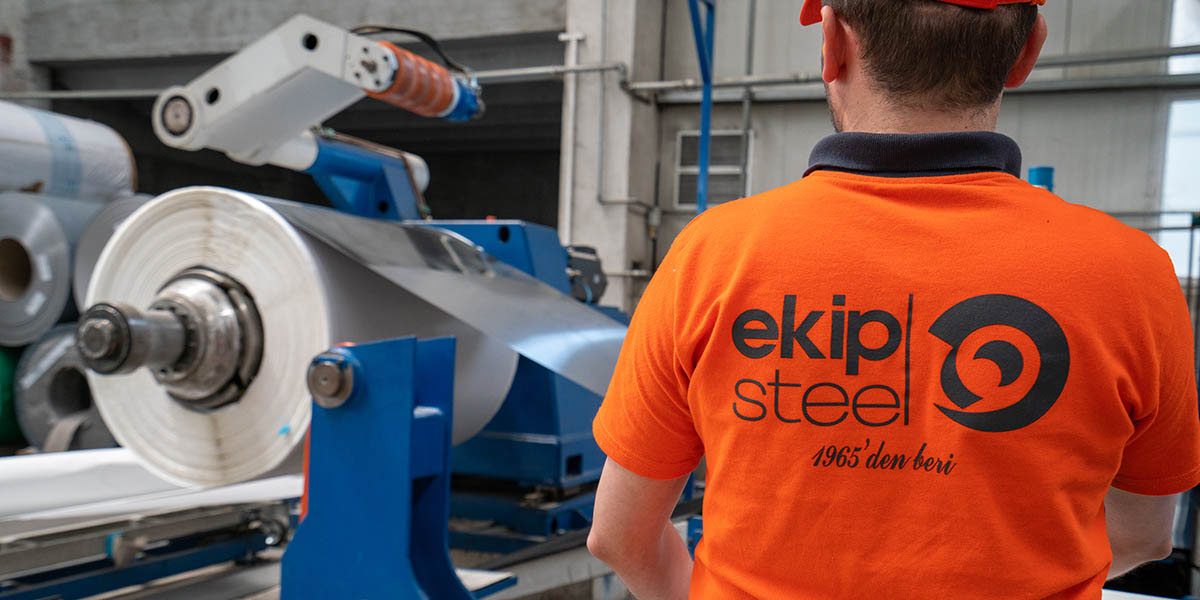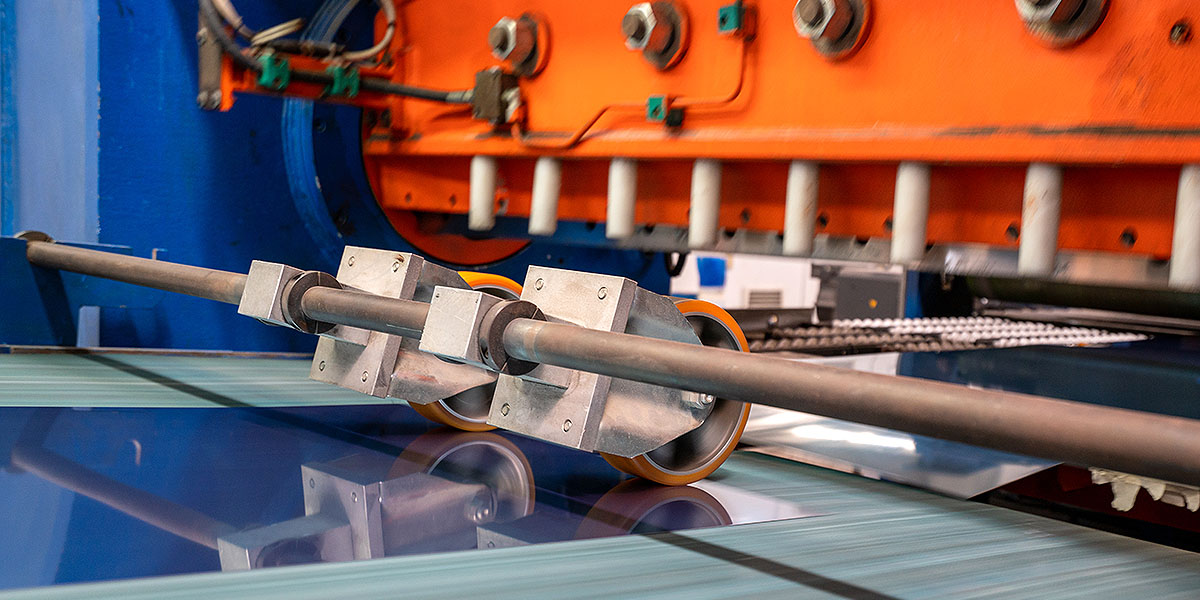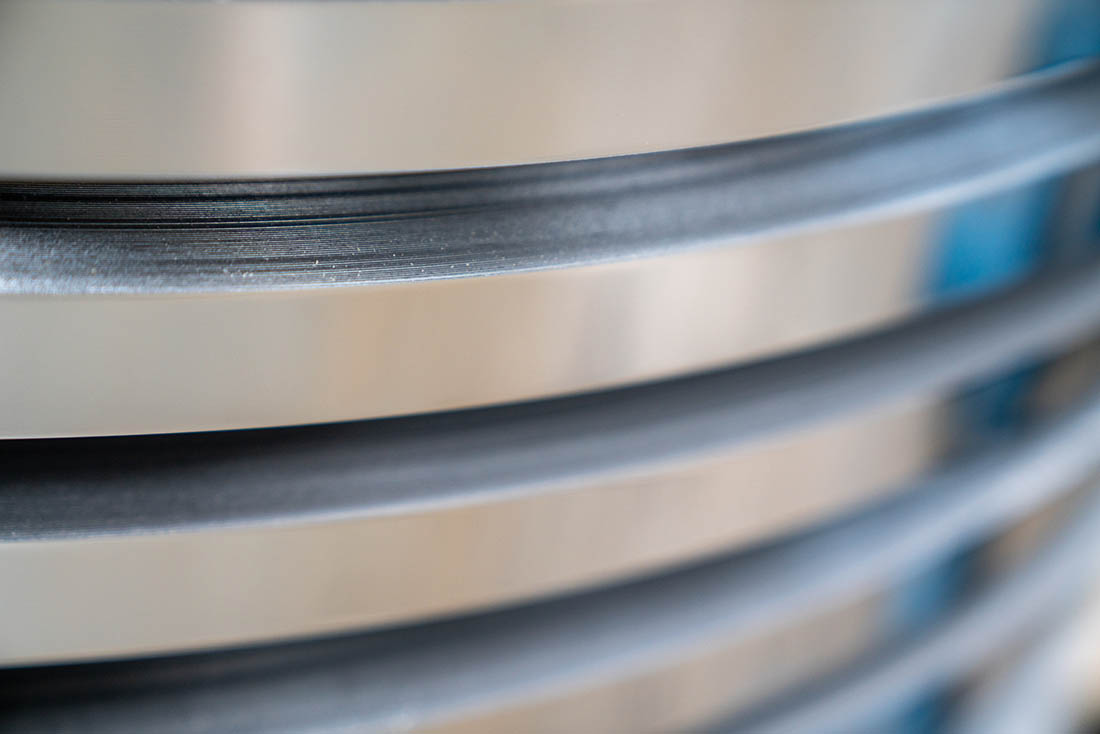Stainless Steel
Stainless steels are ferrous alloys containing at least about 12% Cr and this is the amount required to prevent rust formation with atmospheres (hence, they are called stainless). Very few stainless steel grades contain more than 30% Cr or less than 50% iron. They acquire their stainless properties by forming an invisible and sticky chromium-rich oxide film. This oxide forms in the presence of oxygen and it improves itself.
Chromium, which inactivates the iron surface, forms an oxide film that protects the substrates of the metal against corrosion. This oxide layer changes the electrochemical properties of the steel and thus, adds properties that protect the steel against the corrosive environment. The chromic oxide layer is thin, firm, and impermeable and it is highly affected by the surface behavior of the metal.
Stainless steels, which have more than 200 types nowadays and whose new types are still discovered, have a very wide range of usage in the industry and manufacturing sector for miscellaneous purposes. By adding a new element, several properties are acquired. Thus, properties such as strength, corrosion resistance, and ease of machining are added to the steel.
Classification of Stainless Steels
Stainless steel can be classified in four main groups depending on their metallurgical structures.
Austenitic stainless steel contains chromium at the range of 16-26% and their nickel ratios vary between 3.55% and 37%. While carbon, one of the other alloying elements, varies between 0.03-0.25%, other properties expected from the material are provided with the addition of elements such as molybdenum, niobium, and titanium. Although it is expensive, this steel group is the most common stainless-steel group. Austenitic stainless steels cannot be hardened by heat treatment as they maintain austenitic microstructures with a face-centered cubic lattice both at room temperature and at elevated temperatures. Their ductility, toughness, and formability are excellent even at low temperatures. They have very good corrosion resistance and their weldability is optimum.
Austenitic stainless steel is not magnetic and can be hardened by a cold finish. Hot and cold treatments can be applied, but they can harden during treatment. Thus, they are resistant to impacts and it is not easy to treat them. In comparison to martensitic and ferritic stainless steels, they exhibit the best high-temperature resistance and very good corrosion resistance. The stainless steels grade 302, 304, and 316 are the commonly known types of austenitic stainless steel. The stainless-steel grade 304 is stabilized with the addition of titanium (321) and niobium (347) alloying elements.
Austenitic stainless steels have a higher thermal expansion coefficient, lower thermal conductivity coefficient, higher electrical resistance, and lower melting point compared to carbon steels.
Austenitic stainless steels have good corrosion resistance, specifically in oxidizing or reducing environments. To enhance the corrosion resistance of this type of stainless steel, the ferrite-forming effect of chromium is eliminated with the addition of austenite-forming alloying elements.
- They have excellent corrosion resistance.
- Their welding capabilities are excellent.
- Since they are ductile, they can be easily shaped.
- They are hygienic and easy to clean and maintain.
- They have good mechanical properties at high temperatures.
- Their mechanical properties are excellent at low temperatures.
- They are not magnetic (annealed).
- Their strength can only be enhanced by hardening.
Ferritic stainless steels are fundamentally iron-chromium alloys containing 12-30% Cr. These alloys are called ferritic. Their commonly used types are ferritic stainless steels grade 405 and 430. They have a cubic volume center structure. Their structures mostly remain ferritic during normal heat treatment. Desired properties are acquired by adding carbide-forming and alloying elements that stabilize the ferritic structure, such as molybdenum, aluminum, silicon, niobium, and titanium. These steels are ferromagnetic and have high mechanical strength. Since their carbon contents vary between 0.02-0.2%, they cannot be hardened by heat treatment and can be easily extruded. When cold forming is applied, the ductility of the material decreases while its strength increases. The processes applied in these steels between 400 oC and 510 oC lead to brittleness and reduce the Charpy impact strength of the material.
To overcome the ductility problem of standard ferritic stainless steels, new ferritic stainless steels with low carbon and nitrogen content have been developed and commercially produced. They provide the same corrosion resistance as nickel-containing stainless steel, but they are economical as there is no need for nickel as an alloying element. In any event, the use of ferritic stainless steels is more limited than austenitic stainless steels due to their low ductility, notch sensitivity, and low weldability.
- Their moderate to good corrosion resistance is improved by increasing chromium content.
- Their strength cannot be enhanced by heat treatment and they are only used as the annealed.
- Their weldability is low.
- They are not as easily formed as austenitic steels.
Duplex stainless steels are materials with high corrosion resistance and high mechanical properties as they are a steel type with high alloying elements that contain ferrite and austenite phases together. Thanks to their superior properties compared to single-phase stainless steels, they are preferred in several areas today.
Austenite and ferrite phase ratios are desired to be 50%/50% in such steels. While the ferrite phase provides resistance to mechanical and stress corrosion cracking, the austenite phase provides ductility and overall corrosion resistance. The carbon content is in the range of 0.03-0.04%. The most commonly used duplex stainless steel is grade 2205. The ferrite phase is cubic volume-centered while the austenite phase is cubic face-centered.
They have better stress corrosion resistance compared to austenitic steels and they have better toughness and ductility compared to ferritic steels. Furthermore, when the two phases exist together, they exhibit a yield strength of 550 to 690 MPa even in the annealed condition, which is approximately two times the yield strength of the single type of steel. The available commercial grades contain 22%-26% chromium, 4%-7% nickel, a maximum of 4.5% molybdenum, approximately 0.7% copper and tungsten, and 0.08%-0.35% nitrogen.
Duplex stainless steels are classified by the PRE (Pitting Resistance Equivalent) equation. The value obtained from the PRE equation is directly proportional to the resistance of the material against pitting corrosion.
- They provide high resistance to stress corrosion.
- They exhibit higher corrosion resistance in environments where no chlorine ions are present.
- They provide higher mechanical strength compared to austenitic and ferritic steels.
- They have good formability.
- Their weldability is high.
Steels with a carbon content of more than 0.1% have an austenitic microstructure at high temperatures. They are iron-chromium-carbon alloys with a tetragonal volume center structure. They have a ferromagnetic property and they can be hardened by heat treatment. Their austenitization temperature is between 950-1050°C depending on the type of steel. If the steel kept at this temperature is quenched, a martensitic microstructure is obtained. The high hardness and mechanical strength, which is obtained in this manner, increase with the percentage of carbon. The steel grades 403, 410, 420, and 501 are common types. Corrosion resistance is lower compared to ferritic and austenitic stainless steel. They are used in application areas where strength and resistance to mechanical weathering are desired with corrosion resistance.
Depending on the product type, martensitic steels are put on the market in the annealed or quenched condition. Products purchased as annealed are subjected to a quenching process (quenching + tempering) after being shaped. Different properties are obtained by changing the tempering temperature. To obtain the best corrosion resistance, it is very important to follow the recommended heat treatment temperature.
Martensitic stainless steels are generally used in the quenched and tempered or annealed state. The fact that the critical cooling rate of martensitic stainless steels is very slow results in the formation of martensite in slow cooling, to illustrate in calm air. Their corrosion resistance in the martensitic state is very good. They do not lose their stainless properties up to 815°C.
- They have moderate corrosion resistance.
- Heat treatment can be applied so that high strength and hardness can be obtained.
- Their weldability is low.
- They are magnetics.
Grades Which are Most Used in Our Country
304 – 304L: It is the most known grade of the austenitic group. It provides high oxidation up to 400 °C. Its mechanical resistance and friction resistance are particularly good. Its form with low carbon content is referred to as 304L. It is used in the production of kitchenware, sinks, household appliances, industrial kitchens, chemical and petrochemical industry, food industry, automotive industry, heat exchanger and boiler.
316 – 316L – 316 Ti: It is resistant to temperatures up to 600 °C. Its mechanical rupture and shrinkage resistance are particularly good. Due to its molybdenum content, it is resistant to oxidation and acids. Its low-carbon state, which is resistant to temperatures up to 400 °C, is 316 and its variety with titanium resistance to high temperature and oxidation is 316Ti. It is used in the chemistry, petrochemical industry, steam boilers, heat-resistant exchangers, various boiler applications. 316L group is used in dairy and nuclear engineering and paper industry. 316Ti group is used in pump and compressor parts, boilers, furnaces, and heat exchangers.
321: Its corrosion resistance has been enhanced by the addition of Titan. It is resistant to high temperatures. It is used in heat exchangers, resistances, exhaust pipes, aviation industry, breweries, chemical industry.
309S: Its oxidation resistance is high at temperatures up to 1050 °C. It is used in the production of equipment and parts resistant to high temperatures.
310-310S: Its oxidation resistance is high at temperatures up to 1100 °C. It is used in furnace parts and equipment resistant to high temperatures, chemical, petrochemical industry.
430: It is the most used grade of the ferritic group. It provides a good surface appearance. It can be magnetized since it does not contain nickel. Decorative uses, glossy surface applications.
441: It provides high-temperature resistance and good corrosion resistance. It can be used in Exhaust systems, Elevator, and Heat exchanger manufacturing.
200: Group 201 which is most widely used, contains the lowest nickel. It is classified as J1-J2-J4-J6 within itself. It yields better results in drawing processes due to the copper content of 204CU. It is used in decorative uses, industrial kitchen, elevator, warehouse manufacturing.






